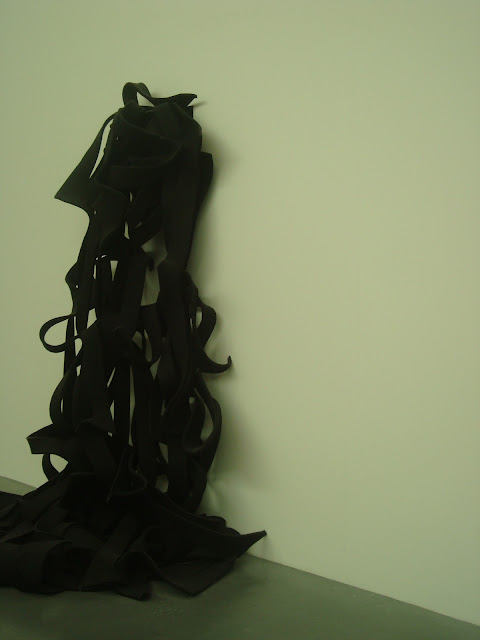CONTEMPORARY ART
Artists since Impressionism have often proclaimed a separation of art from literature, the breaking of a relationship that was certainly close to the heart of Classicism. A looser affiliation with music has often been offered in exchange. Music, it was said, reaches deeper levels of response than could be reached by an art dependent on learned interpretation. The abstract elements of art - color, form, scale, their deployment in hard, soft, rhythmically assertive or quiet ways - would strike through man´s beneath.
Histories of modern art conventionally stress the road to abstraction as the essential course of modernism- as a race course even, since there is much talk of who got there first to produce the first abstract work. In the nineteenth century avant-garde painting proceeded mostly by means of landscapes and still-life painting. The painters known to history as the Post-Impressionists they were not a group, but shared the impact of Impressionism and an urge to move beyond its emphatic objectivity to something more obviously constructed and significant - provided many of the starting points of twentieth century art. Gauguin was the most openly primitivist of them and other artists as Monet, Manet, Van gogh, Cezanne.
Expressionism - was first used to imply the reverse of Impressionism, to indicate the rejection of Impressionist priorities in French art. We can find echoes of the work of Matisse, Munch, Mondrian. The objective with this movement, was to move the spectator emotionally an spiritually through a markedly personal vision of the world, communicated through anti-naturalistic forms and colors.
In the works of Picasso and Braque, especially their paintings of about 1909 to 1911, the issue of figuration versus abstraction first becomes a conscious matter. This work is called Analytical Cubism, and though the term like most such shorthand labels is misleading it permits us to refer to that phase o kind of work quickly. It is generally true to say that their work were done without reference to models. This has to be stressed because Cubism is said to have sprung from the art of Cezanne and to involve the representing of objects from several different viewpoints. What they say about Cubism is far from conclusive except on one point: they were working within the tradition of painting and they were doing something new - ¨seeking a new expression, as Picasso put it retrospectively in 1932.
Courbet, Manet and the Impressionists had in their different ways asserted that it was the job of painters to represent the real world directly and exclusively. Seurat and Cezanne had found it necessary to process reality through a controlling method or an intuitive process of integration in order to arrive at a pictorial wholeness they found essential. Gauguin is the best known artist associated with this tendency, which is Symbolism, but he is not typical of it: most Symbolist painting aimed at hyper-sophistication, not primitivism. As Cubists, Picasso and Braque belong to the Courbet-Manet-Impressionism tradition of taking the ordinary world as subject.
Bibliography:
Lynton, Norbert - The Story of Modern Art - Phaidon 1992





















